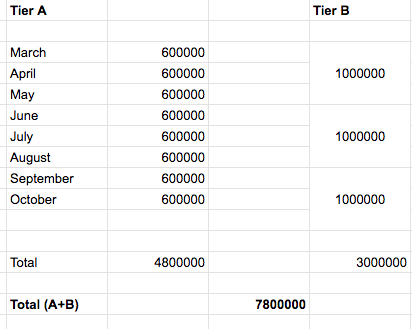Thank you to all who joined and shared thoughts during today’s App Mining call. You can view the full recording here. The discussion was incredibly productive and leaves us with a few key things to think about over the next month.
If we revisit the original, core idea of App Mining, we recall that we were aiming to build an algorithmic, automated mechanism for evaluating app quality that could also distribute monthly rewards for app developers.
Through much experimentation, various successes & failures, and many conversations like the one we had earlier today, we’ve learned that several problems need to be addressed in order for App Mining to better serve the Blockstack community and mission.
After a year-plus of working closely with app miners, we want to share the key challenges we are facing as a community and request feedback in the next steps of the program. In particular, we need to consider the following:
Objectively Fair Distribution
- How can we design a ranking system that rewards apps that deliver a high-quality user experience and put users in full control of their data and privacy?
- How will this system be resistant to any gaming?
- Is this system scalable such that it can rank hundreds of thousands of apps?
Privacy-Preserving Analytics
- How can we develop a mechanism for tracking an app’s user activity that does not exploit users’ data and privacy? See similar efforts by Brave.
Decentralization
- Because of Blockstack PBC’s plans for decentralization, it does not anticipate being the long-term facilitator of App Mining. What potential independent entity (or entities) can fairly and effectively distribute Stacks tokens to App Mining participants?
Next Steps: App mining will conduct payouts as planned for the months of January and February 2020. We’re actively seeking your feedback to determine the next steps for App Mining, and aim to make a decision on the path forward by Feb 1. All options are on the table, including potentially pausing the program until these challenges can be addressed
Here’s how you can contribute to an iteration of App Mining that is a win for everyone:
- Ahead of February 1st, 2020, submit a proposal that addresses the above criteria to the App Mining repository in GitHub.
Important disclaimer
The Securities and Exchange Commission (SEC) has qualified the offering statement that we have filed with the SEC. The information in that offering statement is more complete than the information we are providing now, and could differ in important ways. You must read the documents filed with the SEC before investing. The offering is being made only by means of its offering statement. This document shall not constitute an offer to sell or the solicitation of an offer to buy, nor shall there be any sale of these securities in any state or jurisdiction in which such offer, solicitation or sale would be unlawful prior to registration or qualification under the securities laws of any such state or jurisdiction.
An indication of interest involves no obligation or commitment of any kind. Any person interested in investing in any offering of Stacks Tokens should review our disclosures and the publicly filed offering statement and the final offering circular that is part of that offering statement here . Blockstack is not registered, licensed or supervised as a broker dealer or investment adviser by the SEC, the Financial Industry Regulatory Authority (FINRA) or any other financial regulatory authority or licensed to provide any financial advice or services.
Forward-looking statements
This communication contains forward-looking statements that are based on our beliefs and assumptions and on information currently available to us. In some cases, you can identify forward-looking statements by the following words: “will,” “expect,” “would,” “intend,” “believe,” or other comparable terminology. Forward-looking statements in this document include, but are not limited to, statements about the future of App Mining . These statements involve risks, uncertainties, assumptions and other factors that may cause actual results or performance to be materially different. More information on the factors, risks and uncertainties that could cause or contribute to such differences is included in our filings with the SEC, including in the “Risk Factors” and “Management’s Discussion & Analysis” sections of our offering statement on Form 1-A. We cannot assure you that the forward-looking statements will prove to be accurate. These forward-looking statements speak only as of the date hereof. We disclaim any obligation to update these forward-looking statements.



